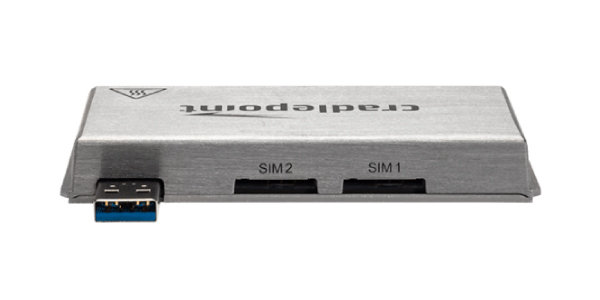The Evolution of Cellular Modems for Enterprise Networking

Embedded Wireless Modems Eliminated the Challenges of External, USB-Based Modems
Wireless modems and connectivity for enterprise networking have come a long way. A variety of factors ranging from technological advancements to innovative customer use cases have transformed cellular modems into a critical component of how a company operates and succeeds — and with 5G on the horizon, that progress is poised to continue.
When modems were first introduced, they were analog, used DSL, and had a simple function: allow computers to connect and pass data to networks. With the advent of cellular technology came the possibility of sending data over wireless connections. This demonstrated the potential of wireless connections for both business and personal use.
The leap to modems that could transfer data wirelessly was significant but difficult. Passing data back and forth through the air was slow, limiting the types and volumes of data that companies could reasonably transfer wirelessly.
The Evolution of USB Modems
In response to the challenges associated with the first wireless modems, manufacturers took another evolutionary step and created USB modems. The first examples were the sleek, stick-like versions that many are familiar with today, but they were not very practical in customer applications.
With the introduction of 3G, individual users could transfer data much easier and faster via a USB modem connected to a laptop. Before Starbucks offered free WiFi to its customers, for example, a professional working remotely from a coffee shop could potentially use a USB modem and his or her laptop to connect to the Internet using cellular technology. Thanks to 3G, this connection was finally reliable and fast enough to truly make remote work — and access — possible.
As 3G developed into a viable data transfer mechanism, Cradlepoint realized the potential it presented and began adding support for USB modems in its routers. If an enterprise bought a router, it could get a USB modem from a provider (such as AT&T or Sprint) and plug it in; the device would then be able to connect. This setup essentially created the first forms of WiFi hot spots, as the Cradlepoint router was able to share a connection to the Internet.
Eliminating the Challenges of USB Modems
Customer creativity complemented, and even advanced, the technological evolution of modems. As wireless routers were able to transfer data more reliably and quickly, customers began using them in new, innovative ways. While in-vehicle deployment wasn’t necessarily part of the initial goal for developing wireless routers, emergency responders saw the potential of deploying wireless access in their vehicles.
However, USB modems presented unique challenges — most notably, form factor and durability. For instance, when police cars or ambulances took sharp turns quickly during emergencies, modems often were damaged or simply broke off. They weren’t designed to work in such conditions.
Further, USB modems stick out from whatever device they’re plugged into to, making them easy to steal by passersby.
When 3G eventually evolved into 4G, the USB stick modems were still in use by customers, but they started to prefer a smaller-footprint, embedded solution. Thus, Cradlepoint began buying the actual modem modules from vendors directly and embedding them into higher-quality, more compact enterprise routers — eliminating the challenges related to USB sticks.
The Benefits of Embedded Modems
The evolution from 3G to 4G ushered in significant improvements for connectivity. With 3G, some companies (such as Verizon and Sprint) were based on CDMA technology, while others (such as AT&T and T-Mobile) were based on GSM technology. The two technologies had disparate 3G speeds, and CDMA-based companies needed a way to increase their speeds. 4G and LTE met the challenge.
4G has ushered in a new chapter of modem evolution. Modern routers provide many more enhancements and solutions than the simple connected/disconnected features offered by the earliest USB devices.
Customer use cases have helped drive enhancements and solutions, too. Modems that used to be damaged in high-speed situations in ambulances and police cars, for instance, are now field-tested and shock-certified specifically for in-vehicle use.
Additional advancements include Auto Carrier Selection. With carrier-switchable embedded modems, Cradlepoint can self-detect the SIM and configure the modem to the given carrier automatically. This significantly boosts flexibility and reduces IT man-hours.
Of course, modems will never stop evolving. The combination of consumer creativity and technological innovation will always create new and exciting steps forward. Over its history, Cradlepoint has supported as many as 300 types of modems and continues to learn from its experiences supporting the evolution from USB devices to embedded modems. Overall, Cradlepoint continues to build on current LTE technologies and looks forward to the transition to 5G.
Contact USAT for more details
For consultation on your next M2M / IoT project contact a USAT Representative
For all your M2M connectivity needs visit ExpressM2M a service of USAT
Share this Post












